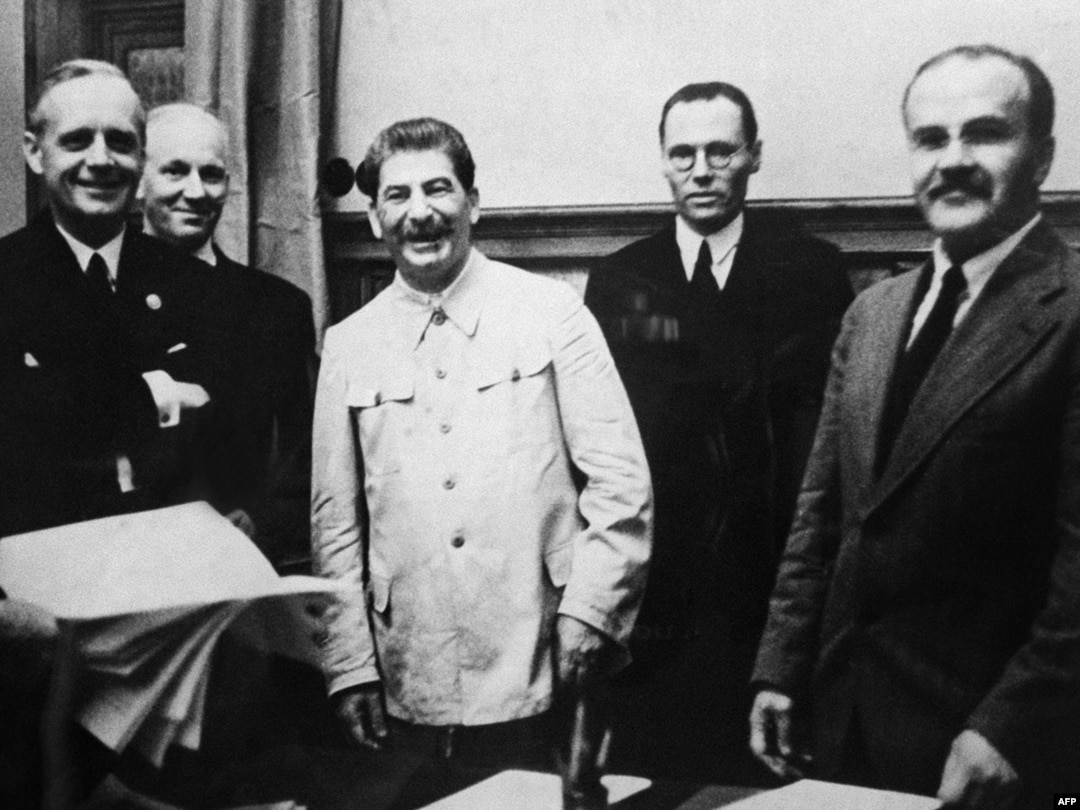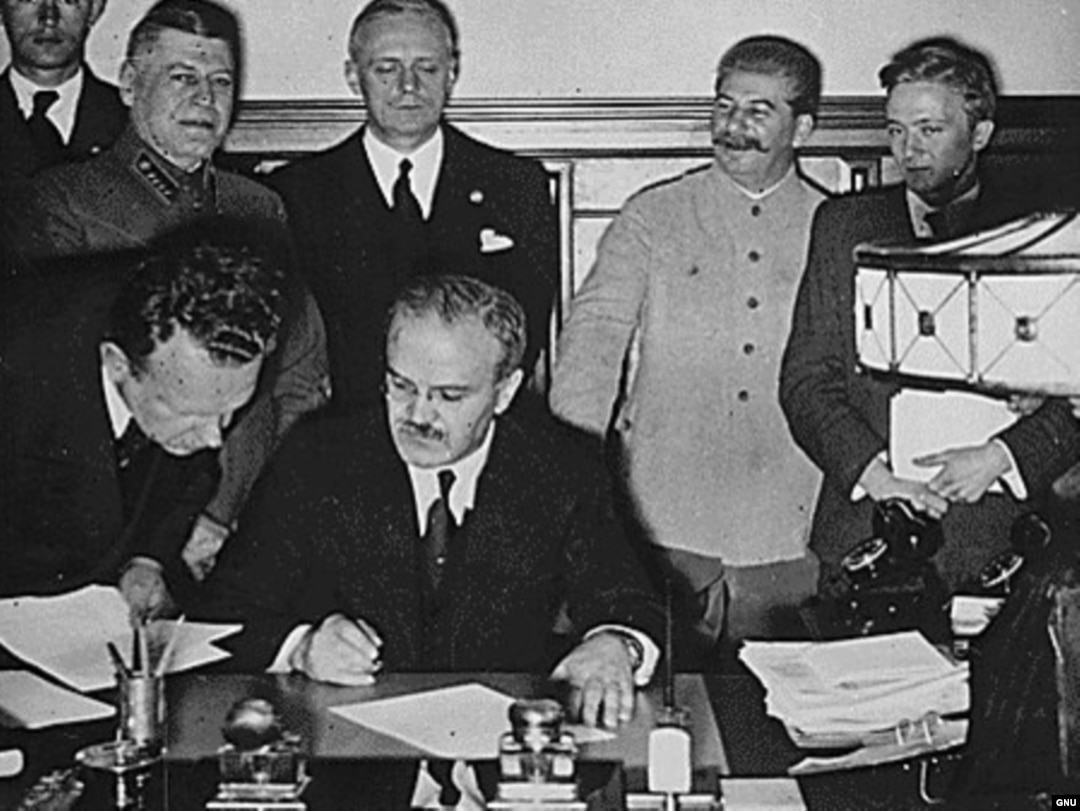The Molotov-Ribbentrop Pact In Pictures

Joachim von Ribbentrop (left), Josef Stalin, and Vyacheslav Molotov (right) - On August 23, 1939, German Foreign Minister Joachim von Ribbentrop met with Soviet dictator Josef Stalin and his Foreign Minister Vyacheslav Molotov at the Kremlin. By dawn, the two powers had signed a nonaggression pact -- as well as a secret protocol establishing "spheres of influence" in Central Europe.

Vyacheslav Molotov signs the German–Soviet non-aggression pact. - For the Soviet side, the agreement bought time for Stalin to rebuild the country's military before what seemed like the inevitable outbreak of war. For Adolf Hitler, it meant a free hand to invade Poland and fight its Western allies without the threat of Soviet intervention.

German Foreign Minister Joachim von Ribbentrop inks the agreement. - After the signing ceremony, Stalin proposed a toast: "I know how much the German people love their Fuehrer," he said. "I should therefore like to drink to his health."

Adolf Hitler welcomes von Ribbentrop back to the Reich Chancellery in Berlin after the signing of the pact. - One week after the agreement was signed, on September 1, 1939, German forces attacked Poland, marking the start of the Second World War.
Vyacheslav Molotov in Berlin in November 1940 - It was less than two years before Hitler broke the nonaggression pact with the massive invasion of the Soviet Union in June 1941.
German and Soviet troops at the so-called "Border of Peace," the demarcation line set up by the Molotov-Ribbentrop Pact - The impact of the agreement is still felt today in the countries whose fates were determined by the pact's secret protocols. The future of Estonia, Latvia, Lithuania, Poland, and present-day Moldova were all at stake when the two powers agreed on the division of influence across Central and Eastern Europe.

